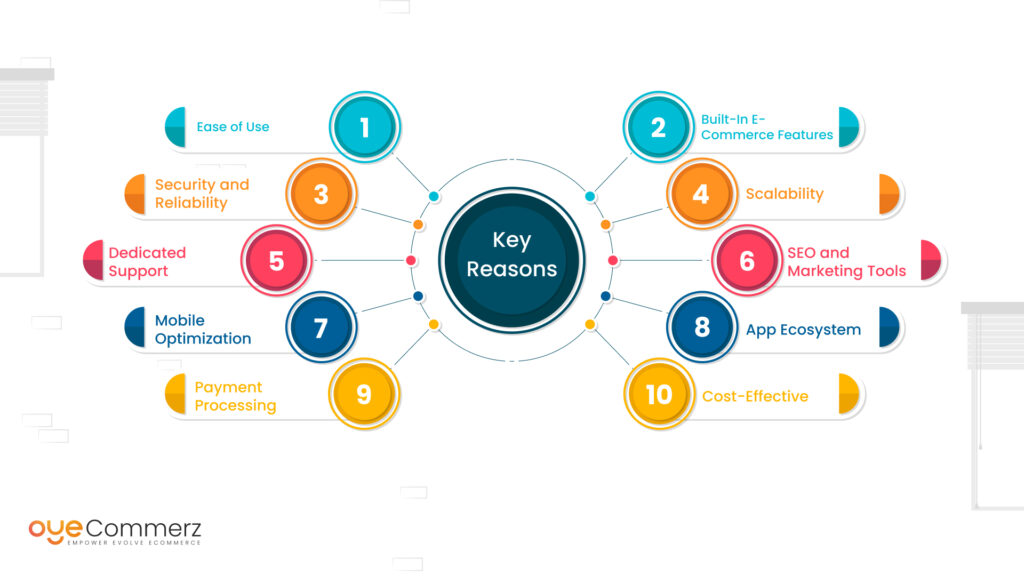Transitioning from WordPress to Shopify is an exciting step toward optimizing your online store operations. As companies grow, selecting a platform that aligns with growth potential, user experience, and flexibility is essential. Shopify has emerged as a preferred choice for online merchants, providing unmatched adaptability, data protection, and ease of use. In this guide, we will delve into why this migration is a game-changer, highlight the advantages, and share practical tips to ensure a seamless transition.
1. Top Reasons to Transition from WP to Shopify
The combination of WordPress and WooCommerce, has served countless e-commerce platforms. However, as businesses expand, issues like plugin dependency, data risks, and technical complexities often obstruct growth. Shopify, designed explicitly for digital retail, eliminates these concerns with an all-in-one, user-friendly platform. Real data back this transition—Shopify powers over 4.4 million stores globally, with a reported 10% boost to sales conversion rates for many businesses after migration.
2. Shopify's Perks for Thriving Online Stores
Shopify’s robust ecosystem is tailored for expanding businesses. Its notable benefits include:
- Effortless Design Flexibility: Shopify provides over 80 professionally designed themes.
- Built-in Features: Features like Shopify Payments and integrated SEO save time and effort.
- International Expansion: Multi-currency support and regional customization empower brands to reach global markets.
Additionally, Shopify boasts an uptime rate of 99.98%, guaranteeing your store is always operational.
3. Preparing for WP to Shopify Migration
Prior to starting the migration process, assess your current store. Analyze product data, customer details, and search engine rankings. Resources such as Shopify’s Migration Kit or external tools help ease the transition. Develop a detailed strategy, making sure all assets—product descriptions, images, and Shopify migration experts blog content—are optimized for transfer.
4. The Importance of Accurate Data Migration
Transferring your data forms the foundation for a smooth transition. When moving from WordPress to Shopify, focus on:
- Inventory Details: SKU, descriptions, and groupings.
- Client Information: Emails, purchase records, and custom fields.
- SEO Optimization: Preserve meta tags, URLs, and forwarding paths to avoid SEO losses.
Use apps like LitExtension to streamline data transfer while reducing mistakes.
5. Tailoring Your Shopify Store to Fit Your Brand
After the move, personalizing your Shopify store helps it reflects your brand. Utilize Shopify’s drag-and-drop editor to design pages effortlessly. Shopify's templates are mobile-responsive, ensuring a smooth user experience across platforms—a critical factor, since 74% of online shopping comes from mobile users.
6. How to Protect Your SEO Rankings When Switching Platforms
Search engine optimization is crucial for maintaining your visibility during migration. Shopify excels in SEO with clean URL structures, built-in optimization tools, and seamless blog integration. Ensure:
- Implement 301 redirects for existing links.
- Enhance updated content with targeted phrases.
- Use Shopify's apps Plug in SEO to monitor performance Bulk migration to Shopify after the switch.
7. Post-Migration Testing
Once the migration is complete, run detailed checks.
Review: - Website speed (Shopify boasts faster speeds compared to WordPress).
- Functionality of payment gateways and checkout processes.
- Mobile responsiveness.
Testing ensures your store provides a seamless shopping experience from day one.
8. Real-Life Success Story
One such migration success story is Gymshark, a fitness apparel brand that transitioned to Shopify. Post-migration, the company experienced a 60% increase in mobile sales and significantly lowered site downtime. This highlights the capabilities of Shopify in enhancing e-commerce growth.
9. Overcoming Common Migration Issues
Migration is not without obstacles, such as information accuracy and reconfiguring custom functionalities. However, Shopify’s robust support and third-party experts make overcoming these hurdles manageable. Collaborating with qualified Shopify developers ensures a smooth transition.
10. Making the Switch: The First Step Toward Success
Migrating from WordPress to Shopify represents a forward-thinking approach to e-commerce. By focusing on growth, streamlining operations, and improving buyer satisfaction, Shopify enables companies to succeed in challenging industries.
Final Thoughts
Transitioning from WP to Shopify offers a smart solution that can greatly enhance your online business performance. With a well-structured strategy, the appropriate resources, and expert support, you can unlock new growth opportunities.
Ready to make the leap? Let’s discuss how our Shopify migration services can revolutionize your e-commerce platform. Get in touch today, or ask yourself: Is it time to seize Shopify’s advantages for your store?
